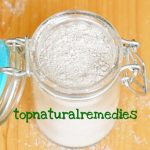Exposure to Toxic Mold – How Risky Is It?
The World Health Organization conducted a study regarding this matter. They concluded that 15% of the houses that are situated in a cold environment present marks of humidity and 5% of them present marks of mold. In a warm environment, 20% of houses show signs of moisture while 25% show evidence of mold.

Mold contains mycotoxins which are dangerous for our organism and can cause many health problems. Here is a list of possible illness you can suffer from.
-
Contents
Skin Rashes
The exposure to black mold can affect the people who have sensitive skin. The symptoms are itchiness, blisters, skin irritations or pink/brown skin rashes. The doctors may recommend antibiotics or another treatment.
-
Eye problems
You can find the mycotoxins from the mold in the air. They produce damage to the cells. If you came in contact with mold, you might suffer from eye problems such as blurry vision, soreness, and inflammations in the eye, watery eyes or bloodshot eyes.
-
Weak immunity
Mold toxins represent a danger to the immunity of your body. Generally speaking, children are the ones who can suffer more from the exposure to the mold because their immunity is not entirely developed. They can experience extreme health problems like diarrhea, acute vomiting, and pulmonary bleeding.
-
Rhinitis Infection
A new study made in 2013 and published in the Journal of Allergy and Clinical Immunology reveals the fact that mold and dampness can cause rhinitis but also rhino-conjunctivitis or allergic rhinitis.
-
Headaches
Usually, the toxic mold can cause you headaches, even migraines. The headaches may be an effect of an allergic reaction to mold or of a sinus pressure. If you’re experiencing headaches, it’s possible that you’ll experience tiredness.
-
Asthma
The contact with dampness can cause serious health problems like asthma. The researchers from a 2012 study (published in the American Journal of Epidemiology) reached the following conclusion: there’s a chance of 80% to develop asthma if you were exposed to mold as a child.
-
Neurological Problems
We’ve already seen that the mycotoxins are dangerous. They can also affect your brain. If you’re exposed to toxic mold, you might experience convulsions, changes in your behavior or ataxia.
-
Circulatory Problems
The mycotoxins can be inhaled, ingested or absorbed; thus they can spread to your blood and cause internal or external bleeding, heart damage or blood clothing.
-
Insomnia
When you inhale the toxins from the mold, you may have your nasal passages inflamed. This may result in a runny nose or a nasal congestion. That’s how you can develop insomnia.
-
Depression
The American Journal of Public Health presented in 2007 the result of a new research. From 6.000 adults living in a house affected by dampness, 3.000 of them were linked to depression.
Here’s some advice: try to use a dehumidifier, make sure your air conditioner filters are clean, and clean your house on a regular basis.



